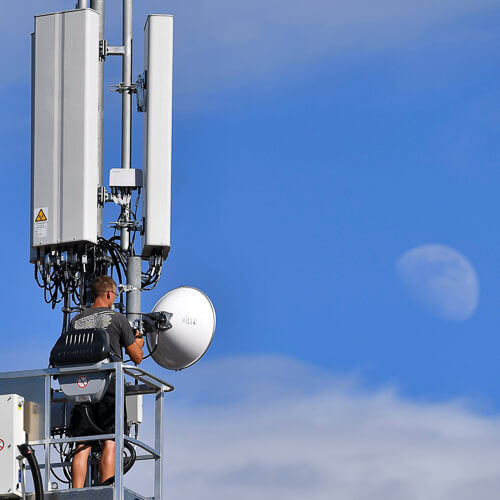
One of the biggest obstacles to 5G take-up in the early days of network launches was the dearth of devices that actually allowed customers and subscribers to access the new high-speed, low-latency offerings.
According to a new report from the Global mobile Suppliers Association (GSA), such concerns are fast receding as the number of 5G devices continues to grow. Indeed, GSA's research has now unearthed 1,257 5G devices that have been announced thus far by manufacturers and OEMs.
Not all of these devices are in the shops, however. The GSA said around 68.2% of all announced 5G devices are understood to be commercially available.
Figure 1:  Five reasons why: 5G SA devices are also increasing, but reports indicate that slow take-up of 5G SA networks is hampering mobile core network growth.
Five reasons why: 5G SA devices are also increasing, but reports indicate that slow take-up of 5G SA networks is hampering mobile core network growth.
(Source: dpa picture alliance / Alamy Stock Photo)
That means the number of commercial 5G devices increased by 21.7% over the last quarter, passing 850 for the first time to reach 857 commercial 5G devices by the end of 2021.
The number of form factors is only 22 – suggesting that manufacturers are sticking to tried and trusted designs. The GSA counts around 614 5G phones, an increase of 42 since October 2021, and at least 210 fixed wireless access (FWA) CPE devices (for indoor and outdoor), of which 98 are now commercially available.
There are more to come, of course. The report said 180 vendors have now announced that 5G devices are available or forthcoming. It is possible that the number of commercially available 5G devices will come close to the 1,000 mark by the end of the first quarter of 2022.
Furthermore, mobile operators will gradually be looking for devices that can operate on their 5G standalone (5G SA) networks. The GSA noted that 676 devices are declared to be supportive of 5G SA in sub-6 GHz bands, 468 of which are commercially available.
5G SA networks still thin on the ground
In terms of the number of 5G networks that have been deployed, the GSA said more than 200 had been launched by the end of 2021. It also noted that many operators are now investing in and deploying 5G SA infrastructure.
The GSA said at least 20 operators in 16 countries or territories are now understood to have launched public 5G SA networks. A further five have deployed the technology, but not yet launched services or have only soft-launched them.
GSA also identified 99 operators in 50 countries or territories that have been investing in public 5G SA networks. This equates to 20.6% of the 481 operators known to be investing in 5G licenses, trials or deployments of any type, it added.
Dell'Oro Group has nevertheless warned that the slow uptake of 5G SA networks by mobile network operators is having an impact on growth in the mobile core network market.
Want to know more about 5G? Check out our dedicated 5G content channel here on
Light Reading.
The research group is forecasting 3% CAGR growth for mobile core networks worldwide over the next five years.
Dave Bolan, research director at Dell'Oro Group said the cumulative revenue forecast for the period from 2022 to 2026 is over $50 billion.
"The overall revenues and the CAGR have been dampened by the muted uptake in 5G SA networks. 5G SA network deployments have not matched the hype, with only 19 networks launched to date," Bolan said.
He added: "CSPs have three choices for offering 5G: dynamic spectrum sharing (DSS), 5G non-standalone (5G NSA), and 5G SA. Only 5G SA requires the new 5G Core and many CSPs seem content for the time being to stick with DSS and 5G NSA. At the same time, CSPs are evaluating the option of moving 5G workloads to the public cloud, which is delaying the market uptake for 5G SA."
Related posts:
— Anne Morris, contributing editor, special to Light Reading
About the Author(s)
You May Also Like












